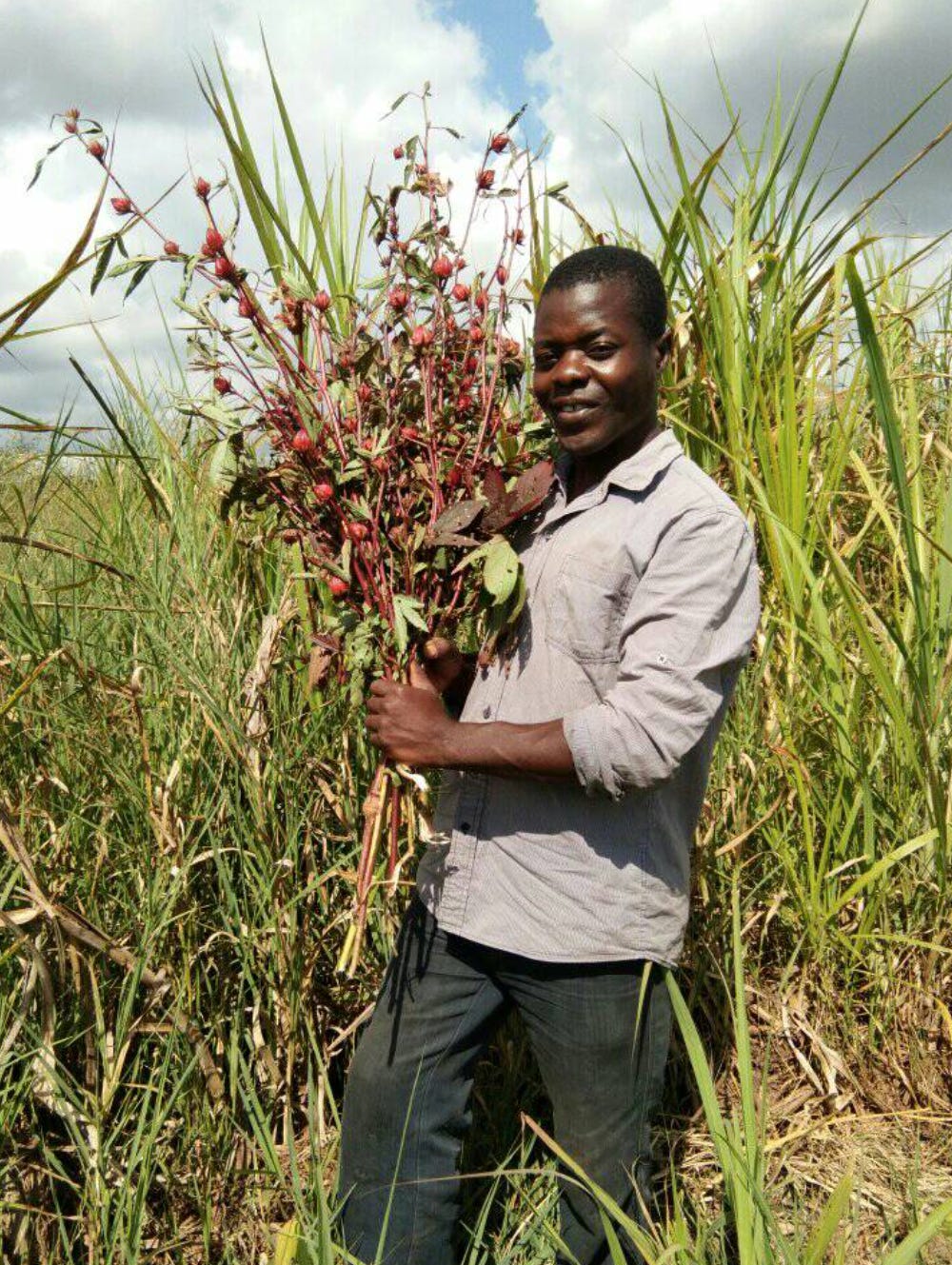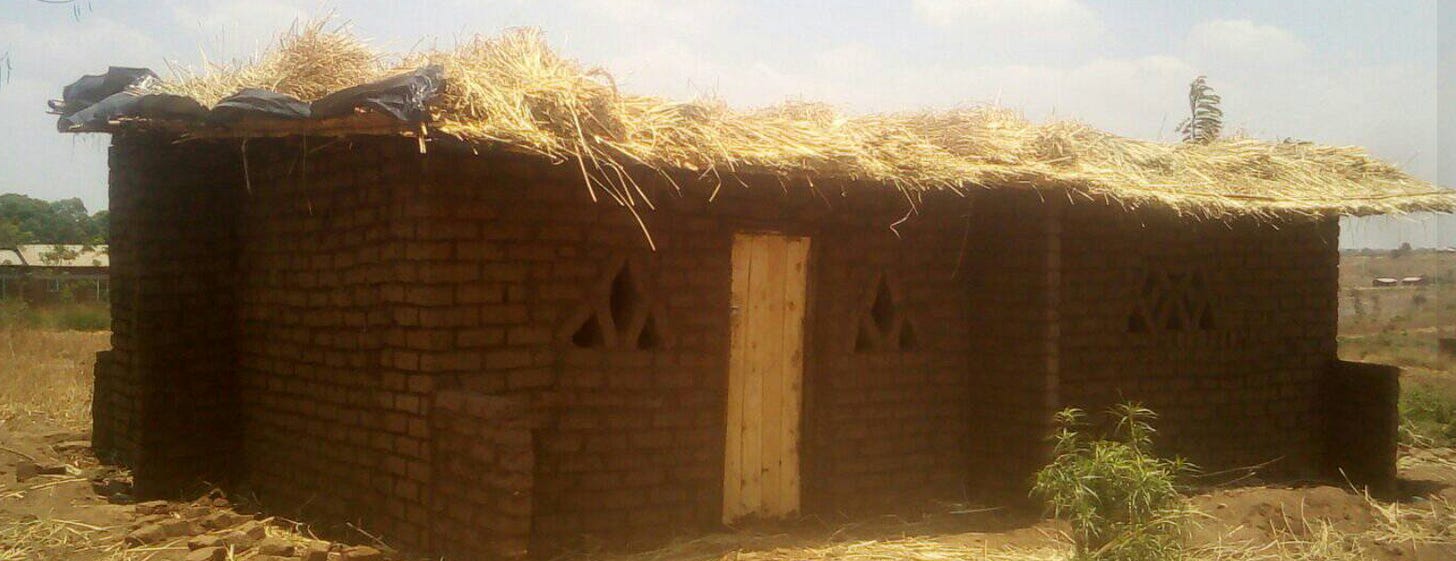Patrick Harry, Kunyasa Dimba Eduplant Inspired
Rebuilding His Vision for a Permaculture Education Center, Brick by Brick
Meet Patrick Elias Harry, a 44-year old sustainable gardener from Rural East Lilongwe in Malawi. He has 8 children and lives with his oldest born, Rashid, who is close to finishing his final secondary school examination to qualify for University education.
His project name is Kunyasa Dimba Eduplant Inspired, an initiative he started in 2007. Through his own resources and know-how he has been training youth in how to use recycled containers for gardening.
His dream and vision - which just recently he has started to realize - is to open a container gardening and sustainable living school and demonstration site on land that he purchased in 2023 specifically for that purpose. There, he hopes to level up his efforts to transfer skills and knowledge to his community by modeling and demonstrating natural building techniques, teaching them sustainable living concepts, and introducting them to permaculture practices.
Sustainable Gardening - A Way of Life
Gardening is an inherent skill for Patrick, having learned it from his late grandmother Kulaya Juma who was a farmer by profession.
His gardening experience increased after he was trained in container gardening techniques by Professor Wilhelm Van Cotthem at Ghent University, Belgium. While there, he was also a student of journalism and intercultural communication at the University of Mechen.
Van Cotthem is well known for his work in container gardening and maintained up until October 2020 a Wordpress blog compiling hundreds of articles on container gardening.

In addition to being a container gardening expert, Patrick has had a passion for reforesting Malawi. Patrick’s answer to deforestation and food insecurity has been to year over year develop a lush food forest where he plants and harvests a wide variety of fruits and vegetables to both sustain himself and his family but also to use as an education and demonstration site for community members.
What’s Behind The Name?
Patrick was very intentional when picking a name for his project. The following explanation is in his own words (with light editing):
First, “Kunyasa” means “in Malawi.” Malawi was called Nyasaland when it was colonized by the British. Nyasa means lake and this was the name was picked by the British when the locals answered “Nyasa” when the British arrived and asked its name. After Malawi attained independence the lake was named Lake Malawi. Patrick picked Nyasa for his project name to show commitment to “restoring nature to the way it was during our ancestor’s times.”
Second, “Dimba” means an evergreen garden in the local language Chichwa. In most cases, a Dimba is situated in moist land where water is readily available. Kunyasa Dimba Eduplant Inspired Garden is located along a stream.
“Eduplant” means his garden is aimed at educating his community to emulate his good example of introducing food forest gardens to help regreen Malawi which at the moment is becoming a desert due to excessive deforestation.
Finally, “Inspired” means the garden is aimed at encouraging or inspiring Malawi community to emulate his example to introduce their own food forest garden at home as one way of combating hunger and poverty at the household level.
Brick By Brick
Patrick’s current goal is to complete the Kunyasa Dimba site that he started developing and building out through 2023. Unfortunately, the last building he constructed - the education center - collapsed in March 2024 after heavy rains and storms. And, he has been working diligently in 2024 after illness and other obstacles to rebuild the education center brick by brick. He is hand moulding (again) 10,000 mud bricks to rebuild the center which will be a 32 foot by 23 foot (10m x 7m) gardening classroom for students.
Plans to build the structure back stronger include recycled construction materials and other easily found natural resources so that the building of the structure itself can act as an earth building lesson for the community. Natural building materials in addition to the hand-moulded bricks include bamboo, elephant grass, blue gum poles, sand quartz, and even local ropes made fom old tires called Limya.
The process and methods for rebuilding the site have already and will continue to serve as a model for the community to construct their own homes in an ecologically friendly way.
As of this writing, Patrick has moulded 2,000 bricks towards the 8,000 he needs in order to rebuild the education center.

After he purchased the land in 2023, Patrick set to work prepping his site and building various structures. To date, he has built an office and kitchen with a naturally-made wood fuel stove, chickens and duck houses, and an ecologically sustainable toilet and bathroom. Upon completion of the structures, doors and thatched roofs are added and then buildings are plastered and cemented. The office and kitchen were substantially completed in this way in June 2023.
The site is very dry but has great potential. In the first half of 2023, he started digging for an underground water well; the well will be used to water vegetables and fruit trees on the site. He also built a “live fence” using a local plant known as Kasatsi. The plant helps protect the site from domestic animals like goats, cattle, and donkeys.
Natural Educator
Patrick is paying forward to his community the local farming knowledge and skills he received from his grandmother at a young age as well as through his own experience and continuous learning. It’s evident from his regular posts on social media - which range from demonstrating wood fuel stove building to how to best propogate, harvest and use local plants and herbs to his discoveries of local animals likes frogs and chamelions - that he is a life-long learner and educator. He is one of the first members of the Africa Permaculture Support Network started by
. He named Ted - a longtime friend - as someone who has inspired him to continue gardening.
When he’s not farming or teaching, his hobbies are gardening (even when he’s not gardening he’s gardening!), listening to music, reading and prayers.
When asked what kind of advice he would provide to others looking to create positive change in their community, he says “never give up your dream despite the ups and downs of life. And, dream big.”
Who Inspired Patrick?
Patrick names his late grandmother, Kulaya Juma, as the primary ChangeMaker in his life. She taught him farming at the age of 8. Unfortunately, Patrick does not have a picture of his grandmother to share. But, we agreed that honoring her memory with words here was sufficient.








